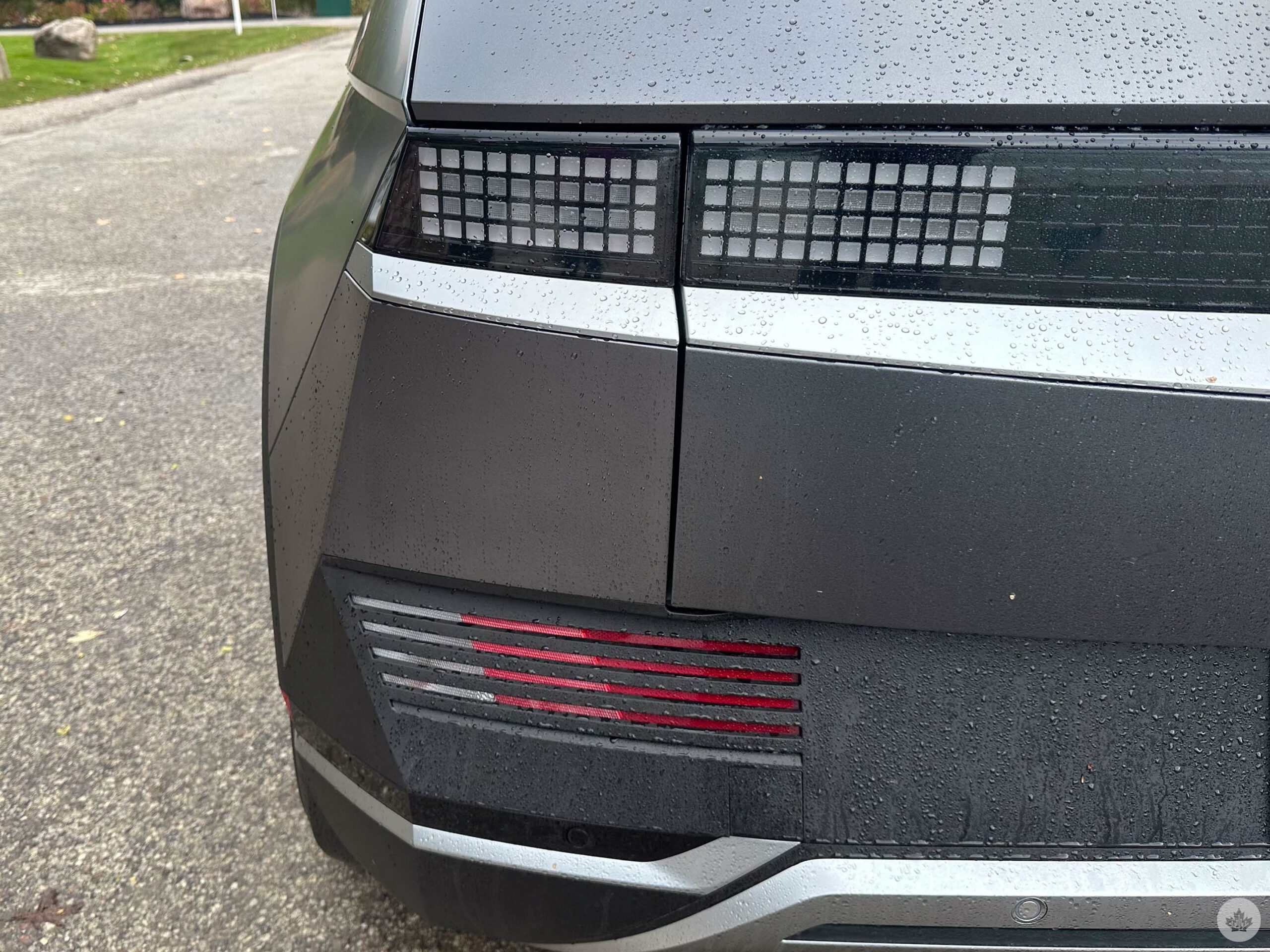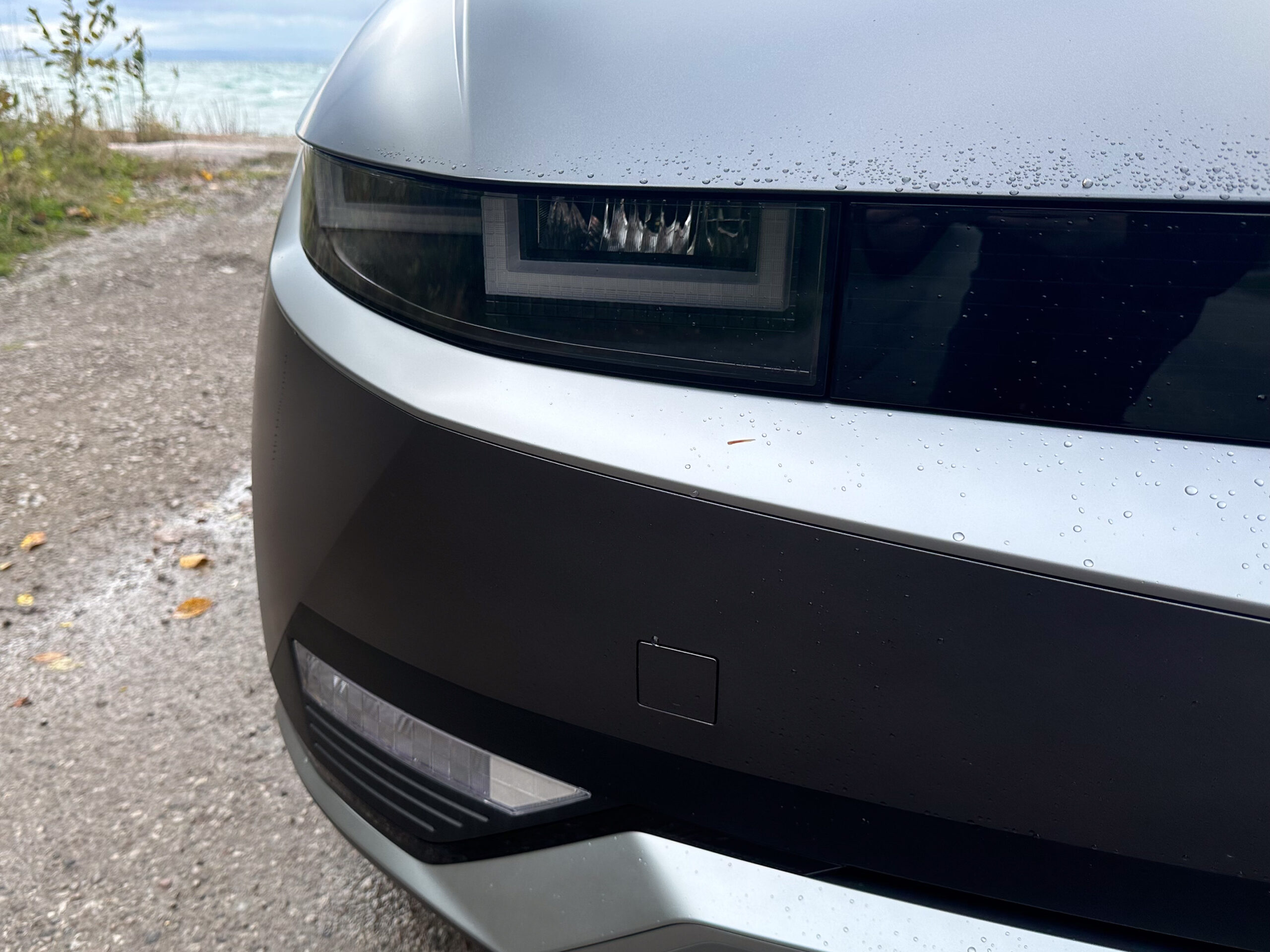I’m one of the lucky few Canadians to get their hands on Hyundai’s much-hyped Ioniq 5 electric vehicle (EV).
Most of my time with the sought-after EV has been resoundingly positive. It’s a sleek-looking SUV with a unique retro aesthetic I describe as inspired by Nintendo 64-era blocky graphics (in fact, the car’s design is a significant reason why I bought it in the first place). The vehicle handles superbly, and the battery range is impressive under most weather conditions, but my six months with the car haven’t been entirely perfect.
From cold weather range surprises to exterior bumper chips, and even questions surrounding integral updates, I’ve run into several minor problems with my Ioniq 5 over the last several months. Owning the EV and not just borrowing a media vehicle for a few days, for better or worse, has allowed me to test the car in a way I feel few journalists/YouTubers have since its release.
Still, after nearly 20,000km with the Ioniq 5, I understand why the Automobile Journalists Association of Canada named it the 2023 Canadian Utility Vehicle of the Year — it’s a joy.
Battery range surprises
While I didn’t initially order the rear-wheel drive ‘extended range’ Ioniq 5 because I wanted to keep the vehicle’s cost as low as possible (at the time, $46,999), this model arrived at the dealer I purchased the car from first. Given the scarcity of the Ioniq 5, I begrudgingly shelled out the additional $5,000 — and I’m glad I did (I’m also very thankful for the $5,000 Federal EV rebate).
Though the RWD Preferred Extended Range Ioniq 5 is rated for 488km by Hyundai Canada, I manage closer to 425-440km in warmer months. For my purposes, this is more than enough range. However, when the temperature drops below zero, battery performance suffers substantially, resulting in roughly 320km-380km in most cases. This range is compounded by the fact that Hyundai recommends you only charge the Ioniq 5 to 80 percent most of the time and 100 percent periodically. It’s worth noting that range also shifts based on how you drive the vehicle.
The Ioniq 5’s unique look is my main reason for buying the car. The ‘Shooting Star Grey’ matte paint is stunning, but requires a fair amount of upkeep.
For my situation, this range drop isn’t an issue since I don’t tend to go on very long trips and I installed a Level-2 charger at home (as expected, my hydro bill has increased slightly). That said, while I was aware of the cold weather range drop going into purchasing an EV, I didn’t expect it to be this substantial, and I imagine many other people won’t either.
It’s worth noting that the EV charging situation is still rather complicated. There are several charging providers out there, including Petro-Canada, Flo and ChargePoint, just to name a few, and they all require either an app and an accompanying account or card. I consider myself pretty tech savvy (I guess I should be since I run MobileSyrup) and found the away-from-home charging process straightforward enough, but I can’t imagine my parents’ jumping through the hoops of downloading an app, creating an account and adding a payment method for every type of charger. The key takeaway here is charging your EV is still not as simple as pumping gas.
“I know there are faster 150kw chargers out there that will charge the EV far more quickly, I just haven’t encountered them yet.”
There’s also the issue of hunting down charging stations. While you can use Hyundai’s in-car navigation system for this, I find PlugShare via Apple’s CarPlay platform far more useful. The crowd-sourced app is kind of like Waze for EV owners. It allows users to add/review EV charging stations and is the perfect tool for finding a charger when you’re on the go. Speaking of chargers, I’ve only been able to find 50Kw chargers in my area (Burlington, Ontario), which, in most cases, take roughly an hour to charge the Ioniq 5. I know there are faster 150kw chargers out there that will charge the EV far more quickly; I just haven’t encountered them yet.
The car
I’m a big fan of the look of the Ioniq 5. I’ve never seen a car like it before and its design is a key reason why it’s the vehicle I landed on when it was time for me to purchase a new car. Everything from its blocky design to the unique, video game-inspired front and back lights are exactly what I want in a car. On that note, I ended up with ‘Shooting Star Grey’ matte paint. While not my first choice because of the upkeep required to maintain the paint, the matte design kicks up the already unique look of the car several notches.
If you’re thinking about the matte version of the Ioniq 5, consider this. First, it’s recommended that you don’t take it through an automatic car wash. This means that even in the dead of winter, you’ll need to wash the car by hand with soap specifically designed for matte paint (I’ve been using Chemical Guys’ Meticulous Soap).
Is this fun? No, but some might feel the extra work is worth the flashy paint job. I’m on the fence about it, especially since you need to be a little more vigilant about bird droppings landing on the vehicle, as they can quickly cause minor etching in the matte paint — even if you get a ceramic coating on the car (I learned this the hard way). Though to be fair, this is true of all cars.
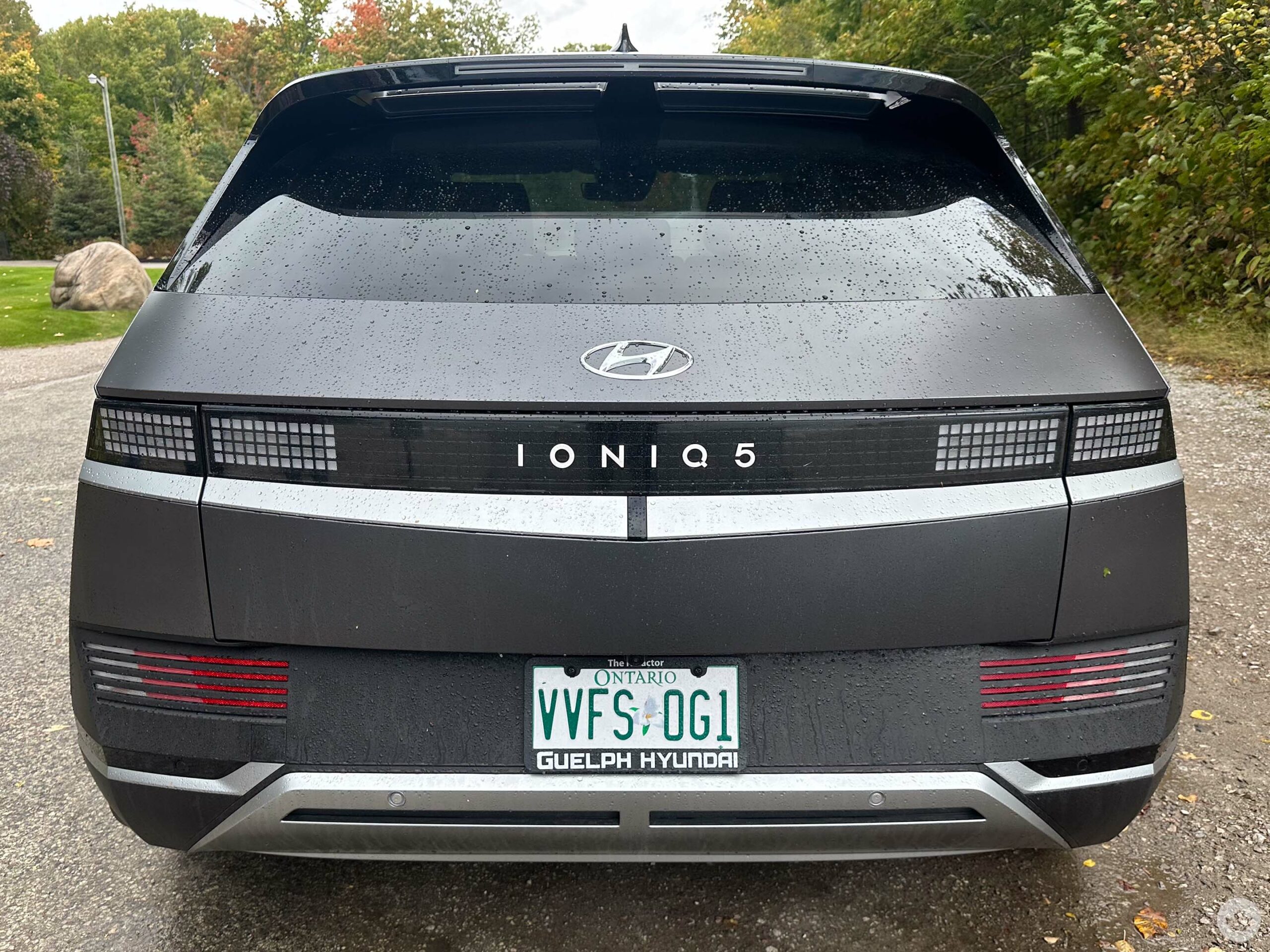
The gaming-inspired rear lights get me every time.
With that in mind, there seems to be an issue with the paint on the Ioniq 5’s matte plastic front bumper across all models and colours. At roughly 10,000km, I started to notice chips in the finish. Usually, they’re pretty small and not very noticeable, but my Ioniq 5 already has a few substantial nicks in it. Again, they’re minuscule, but I can’t help but wonder how bad this section of the bumper will look in a few years (if it becomes awful, I’ll likely get that part of the car wrapped in a gray matte colour). While rock chips on any vehicle are to be expected, I feel the situation with this part of the Ioniq 5’s bumper is worse than what you would expect from most vehicles.
I also like the Ioniq 5’s simple interior. There’s not much that stands out about the inside of the vehicle, but that’s also why it appeals to me. It features clean lines and a pair of expansive displays. Some aren’t fond of the white bezels running around the edges of the screens and would prefer they were black like with Kia’s EV6, but I like them (they sort of look like two iPad minis strapped to the dashboard, but in a cool way). With this in mind, the interior plastic is a smudge magnet, so if you’re like me and want to keep the inside of your car clean-looking, you’ll want to pick up some sort of wipe.

No, those aren’t dead bugs. The majority of those black splotches are actually chips in the front bumper’s finish.
When it comes to handling, the Ioniq 5 controls like a floating cloud for the most part. Its steering is responsive, but not overly tight, offering a chilled-out, casual driving experience that fits well with my driving habits. It took me a few weeks to wrap my head around the Ioniq 5’s size given it’s so much larger and wider than any vehicle I’ve driven before. The one downside, handling-wise, is that the EV’s turning radius isn’t the greatest. Sometimes when maneuvering the car in crowded parking, lots of three-point turns can turn into five-point turns. I’m also a fan of the EV’s Level 2 Highway Driving technology that maintains your speed and distance between cars while also keeping you in between the lines. I only use it when there’s not much traffic on the road during lengthy drives, but it can make a long trip far more relaxing.
That instant torque electric vehicles are known for is very present here. As soon as you tap the accelerator, even with regenerative braking enabled, you’ll feel the car take off with a jolt. It’s shocking at first, but it’s also a lot of fun and I find I miss that instant response when using a gas-powered vehicle. As a side note, if you really want to feel the power the Ioniq 5 offers, turn off regenerative braking and switch the car to ‘Sport Mode.’ You may want to warn your passengers because you’ll feel like a Formula 1 driver.
It’s worth mentioning that I’m coming from a 2014 Ford Fiesta, so a lot of the key complaints some people have about the features the Ioniq 5 is missing don’t bother me. For example, I don’t really care that the EV doesn’t automatically adjust the powered diver’s seat to my preferences when I get in the car, but I understand this is a feature most vehicles in this price range typically offer. Other missteps like this include the lack of rain-sensing wipers, a powered trunk door, and the car locking automatically when you walk away with the keys. This oversight is of particular interest since it’s very obvious when you leave the doors unlocked, given the handles stick out.
One notable issue I’ve encountered with the vehicle include the lack of a rear wiper. This isn’t a deal breaker, but in the winter months, it can get pretty annoying, and in some instances, I needed to pull over to clear off the back window. Hopefully, future versions of the Ioniq 5 feature a rear wiper as it’s a necessity in Canadian winters (if the recently revealed N version of the car is an indication, it likely will).
Infotainment and updates
Like most manufacturers’ infotainment system apps, Hyundai’s in-car navigation app is pretty average. There’s nothing wrong with it, but I prefer Waze’s crowd-sourced community and traffic information (all the app needs is EV charger locations, and it would be near perfect). This means that I found myself connecting my iPhone to the EV to use Apple’s CarPlay platform through a wired connection (the Ioniq 5 doesn’t offer wireless CarPlay, unfortunately, though you can rectify this with an adapter)
CarPlay is great. Whether I’m listening to music on Spotify or podcasts via Pocket Casts, the experience is smooth and responsive. However, this is also when I encountered what I’d describe as my first major issue with the car. At random intervals, my phone disconnected from the car’s infotainment system. At first, this happened occasionally, but the issue got so bad that during an hour’s drive, the connection dropped over 20 times.
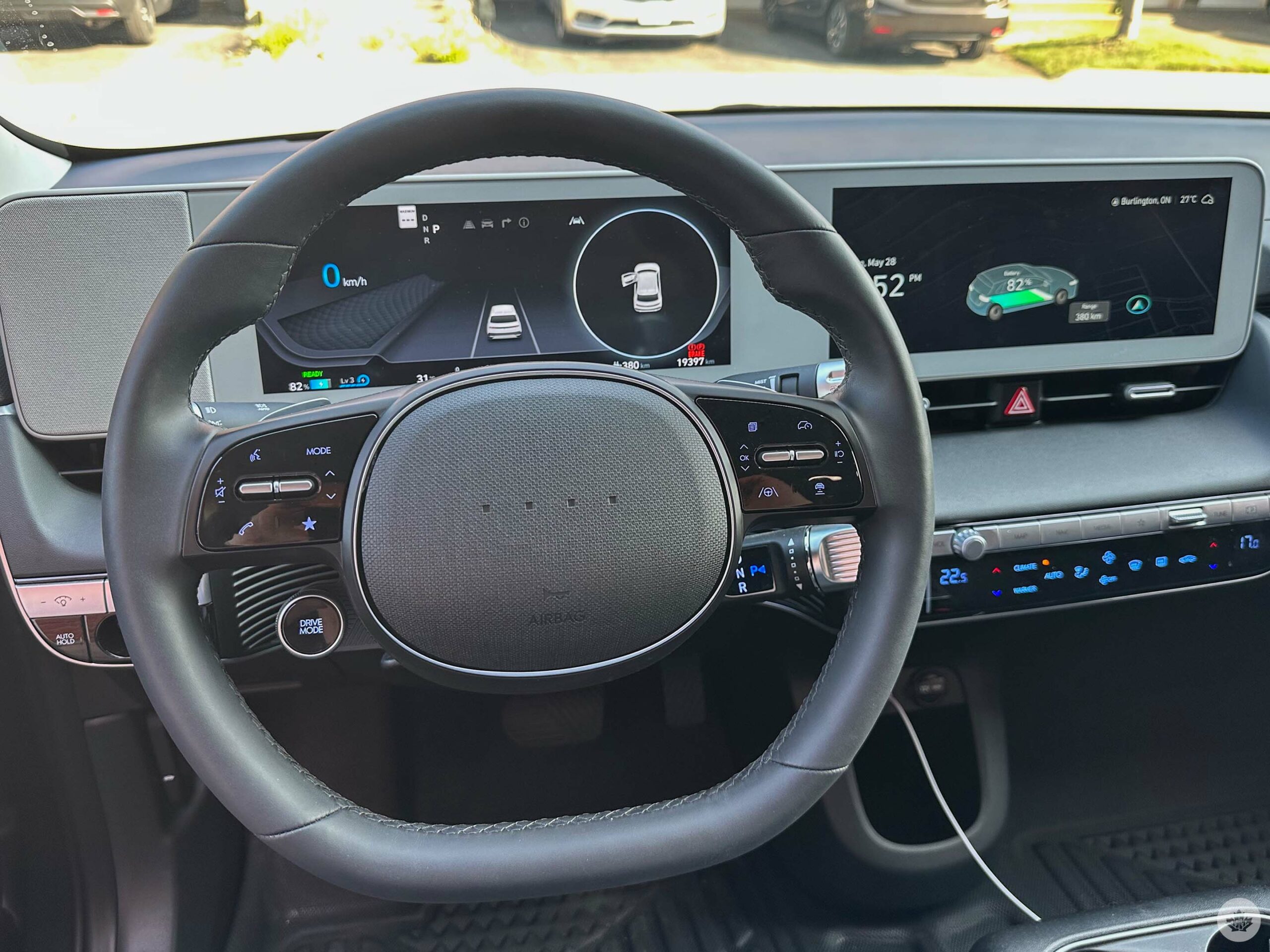
The Ioniq 5’s interior is simple and understated.
When I contacted my local Hyundai dealer about the issue, they seemed surprised and reluctant to do anything about the problem despite it being a relatively widespread flaw (there are several Reddit threads about USB connection issues). After some convincing, the dealer offered to replace the USB port under warranty. I’ve gone on several lengthy drives since replacing the USB port and have only encountered one disconnect so far, so I’m hoping the problem is mostly solved.
This brings me to my next issue with the car. If you were hoping for Tesla-like over-the-air (OTA) updates that add new features to the Ioniq 5, you’re out of luck. First off, to my understanding, OTA updates aren’t currently available in Canada and likely will never arrive here. Further, these updates are only tied to the car’s infotainment system and don’t include new functionality that affects notable features or the car’s performance. Telsa-like updates won’t hit Hyundai’s EVs until the 2025 models release.
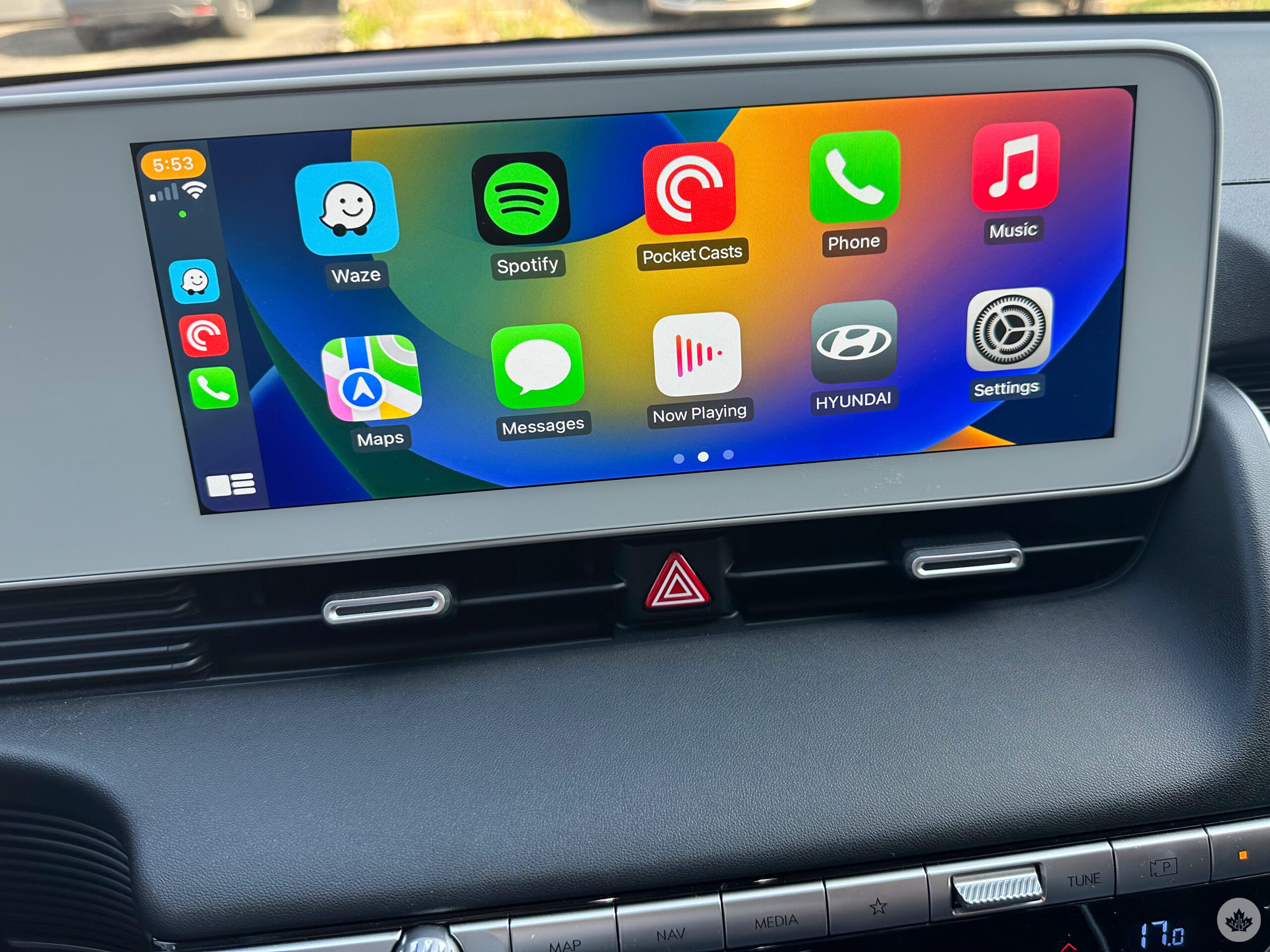
When it works consistently, CarPlay is a great automotive infotainment platform.
Next we have the Ioniq 5’s battery preconditioning update. I reached out to Hyundai back in January and was told the automaker had nothing to announce regarding the update releasing in Canada. A quick search online reveals it’s a unclear if the update has officially made its way here, with some Ioniq 5 owners stating that their dealer downloaded and installed the battery preconditioning update, while others claim it either isn’t yet available yet or may never release in Canada (I haven’t been contacted by my local Hyundai dealer about the update). Adding further confusion to the situation, it’s unknown if all Canadian Ioniq 5’s qualify for the update, despite every model featuring a heat pump here (in the U.S., only the AWD version qualifies for the battery pre-conditioning update).
So what is battery pre-conditioning? If you’re on a long drive in the winter and need to stop at a charger, the feature heats up the Ioniq 5’s battery as you drive toward your charging destination to allow for faster charging. The catch here is you need to use Hyundai’s in-car navigation system (you also can’t run the in-car navigation and Waze simultaneously). Since I don’t charge on the go often, this isn’t a big issue for me. Still, battery pre-conditioning offers welcome peace of mind. Hopefully, Hyundai Canada makes an official, clear announcement regarding the feature in the near future.
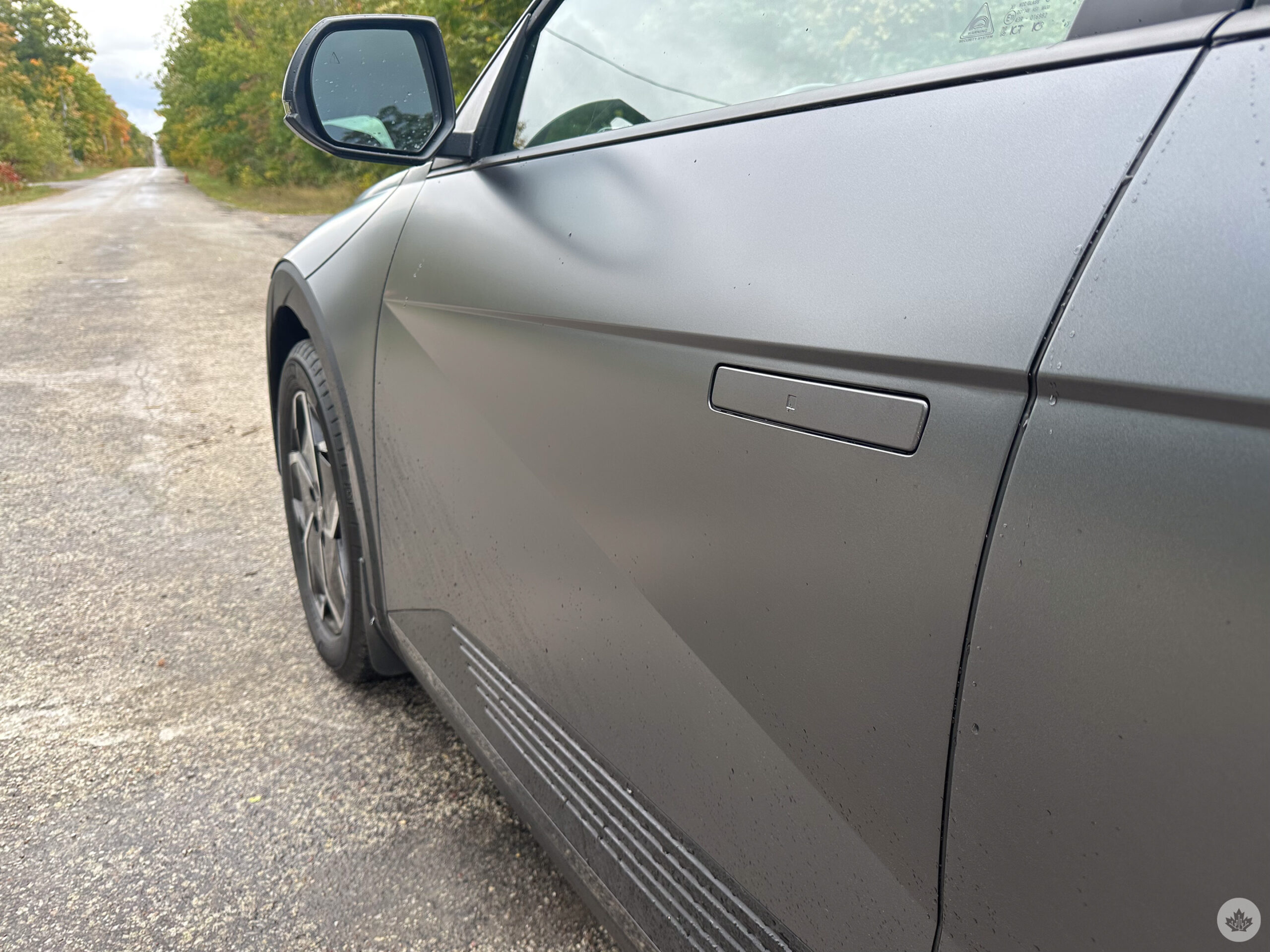
An electric future
Despite the few issues I’ve encountered, I’m still very happy with my Ioniq 5. That said, the car remains difficult to buy, with order times still taking up to two years in some cases (I have heard that more orders are starting to arrive). The vehicle also doesn’t offer an entirely perfect experience and features a few kinks that will likely be ironed out in future iterations, with the bumper chipping and infotainment disconnects being the most notable examples.
Overall, my first six months with Hyundai’s Ioniq 5 have been a blast and I look forward to exploring the Canadian EV landscape more in the future, including the Ioniq 6.

